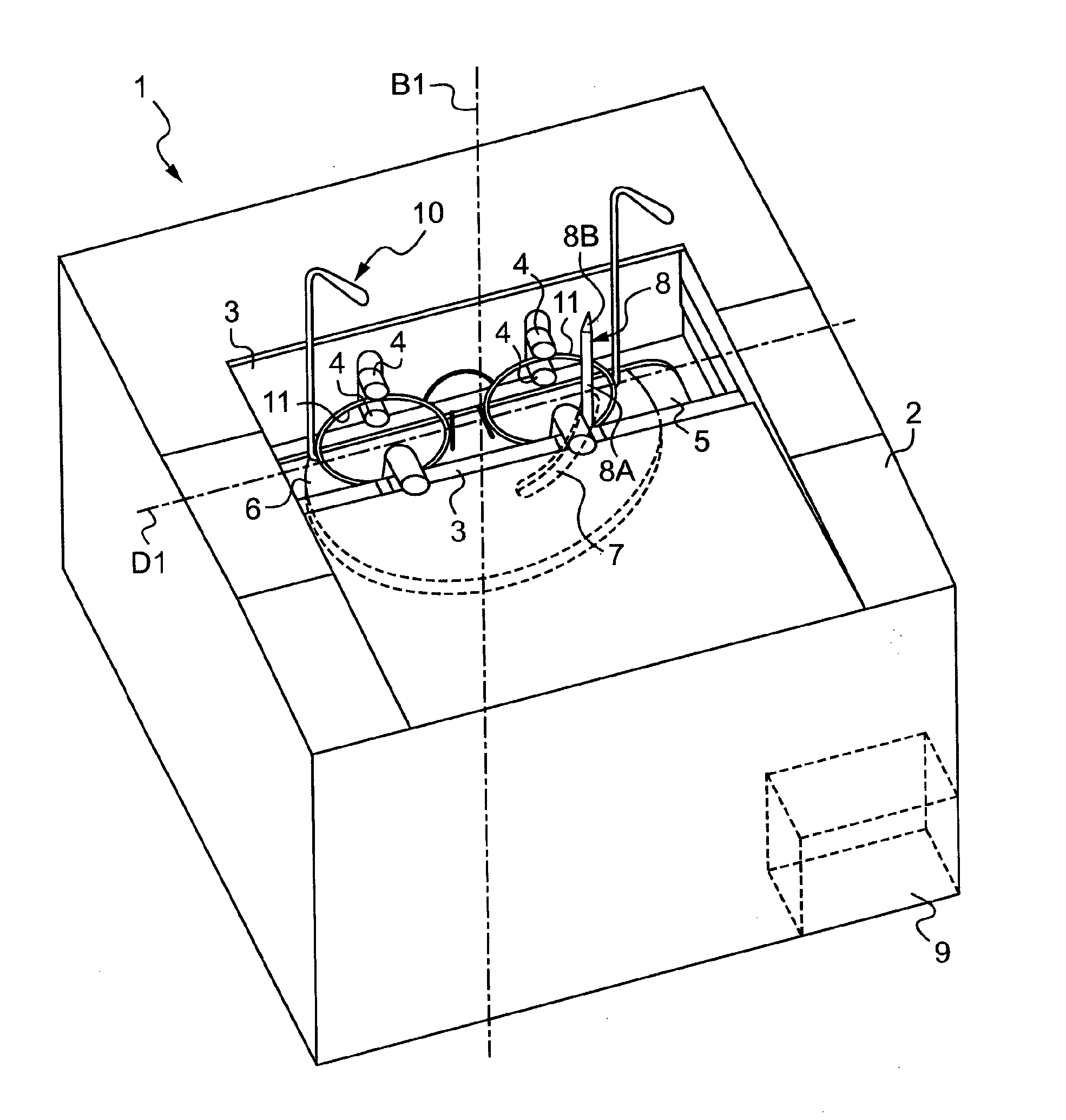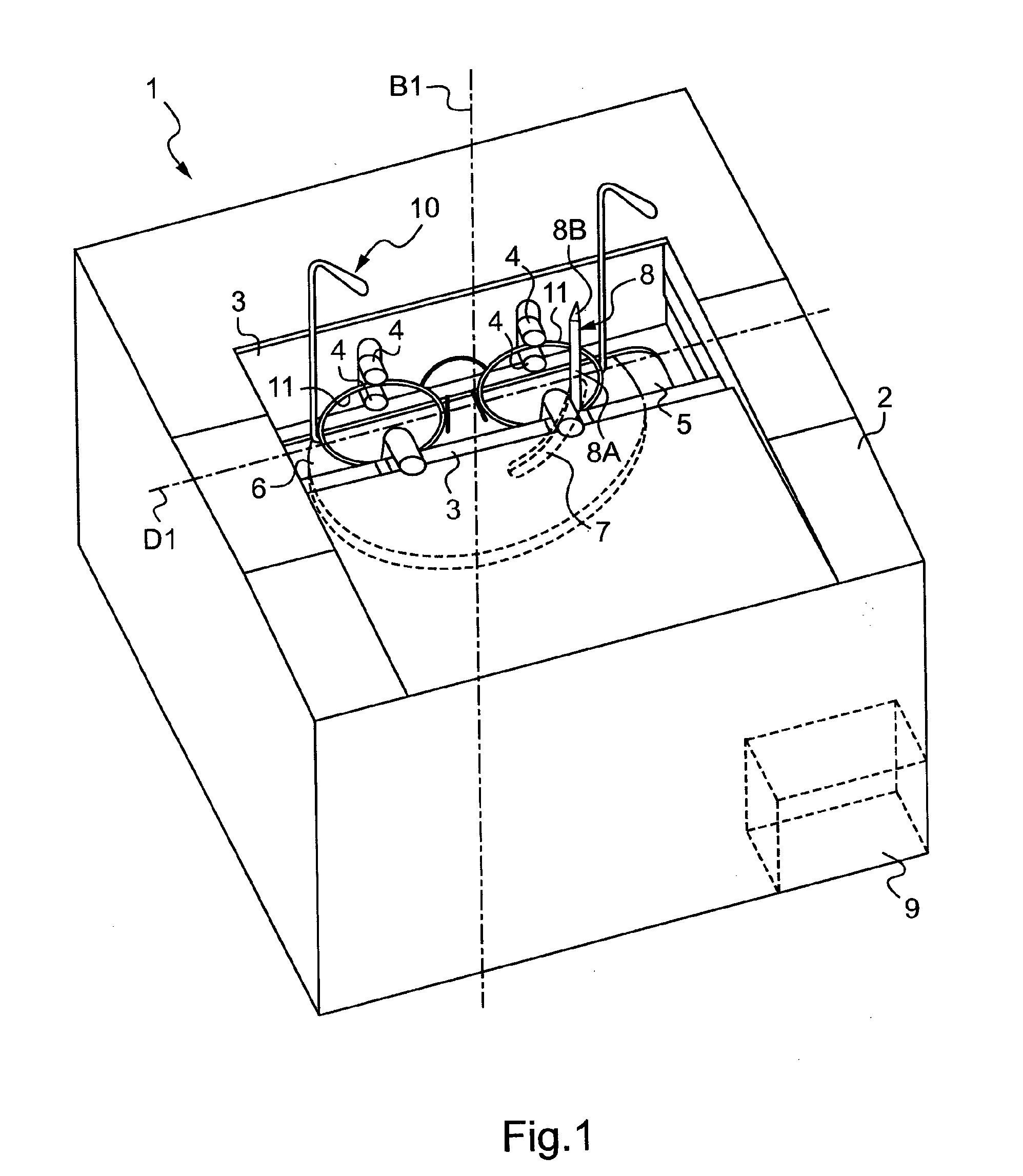Method of preparing an ophthalmic lens with special machining of its engagement ridge
- Summary
- Abstract
- Description
- Claims
- Application Information
AI Technical Summary
Benefits of technology
Problems solved by technology
Method used
Image
Examples
Embodiment Construction
[0025]The following description with reference to the accompanying drawings given by way of non-limiting example makes it clear what the invention consists in and how it can be reduced to practice.
[0026]In the accompanying drawings:
[0027]FIG. 1 is a perspective view of a reader appliance for reading the outline of bezels of eyeglass frames;
[0028]FIG. 2 is a diagrammatic view of an ophthalmic lens held in a shaper appliance provided with a beveling grindwheel;
[0029]FIGS. 3 to 5 are side views of three beveling grindwheels;
[0030]FIG. 6 is a face view of a non-edged ophthalmic lens, on which there can be seen a longitudinal profile of a bezel of a surround of an eyeglass frame, a longitudinal profile of an engagement ridge that the ophthalmic lens will present once it has been edged, and a boxing frame circumscribing the longitudinal profile of the engagement ridge;
[0031]FIGS. 7A and 7B are section views of the edge faces of two ophthalmic lenses edged using two different implementatio...
PUM
 Login to View More
Login to View More Abstract
Description
Claims
Application Information
 Login to View More
Login to View More - R&D
- Intellectual Property
- Life Sciences
- Materials
- Tech Scout
- Unparalleled Data Quality
- Higher Quality Content
- 60% Fewer Hallucinations
Browse by: Latest US Patents, China's latest patents, Technical Efficacy Thesaurus, Application Domain, Technology Topic, Popular Technical Reports.
© 2025 PatSnap. All rights reserved.Legal|Privacy policy|Modern Slavery Act Transparency Statement|Sitemap|About US| Contact US: help@patsnap.com



